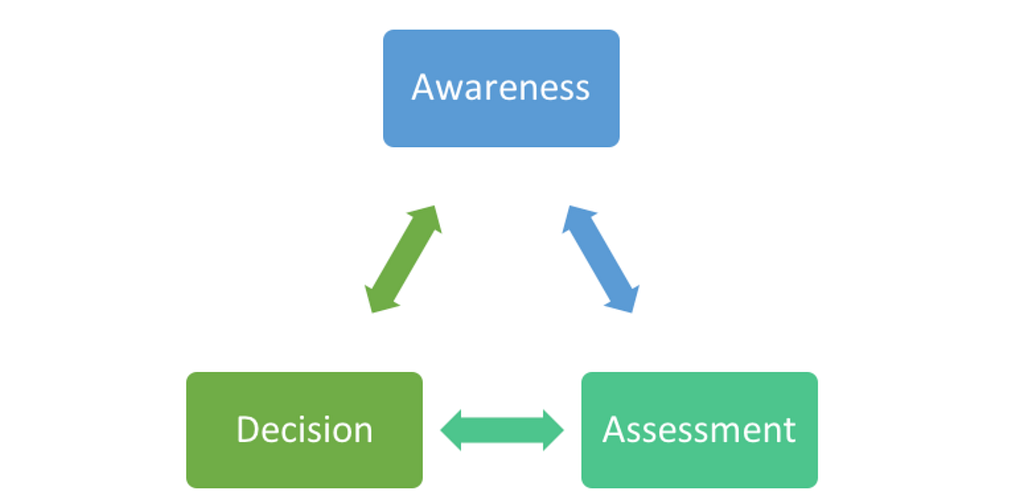The Process Of Coming Out
Coming out is commonly seen as a one-time experience. The stereotype is often of a young LGBTQ+ individual coming to terms with identity, achieving self-acceptance, and deciding to disclose to everyone in their lives. The best cases are often sprinkled with love, acceptance, and nowadays there may even be a party involved. However, it’s important to remember that this is all too often not the case. This simplified view minimizes the complexity of coming out, which in reality is a series of processes that occur across the lifespan.

In reality, coming out includes the process of learning who you are, but it also includes the process of disclosing to others as well. The coming out process prompts a variety of stressors. Throughout the lifetime, an individual is likely to be faced with the question of coming out again and again. Due to a variety of contexts that may warrant disclosure, it is also possible that individuals are faced with coming out stressors throughout the lifespan. It’s important for us to consider this cyclical process to acknowledge the reality of coming out experiences and to be able to better help who are experiencing coming out mental health concerns.
LGBTQ+ individuals face a number of stressors when considering coming out. Although hopeful to be met with care and compassion, when considering coming out LGBTQ+ individuals are often plagued by the following questions:
Will ________ understand?
Will ________ still treat me the same way?
Will ________ judge me?
Will ________ be angry?
Will ________ be sad?
Will ________ hurt me?
Will I lose my job?
Will I lose my home?
Will I be safe?
Enduring these stressors, LGBTQ+ individuals often feel lonely, disconnected, confused, sad, ashamed, fearful, angry, and vulnerable. These coming out stressors help to explain the unfortunate statistic that LGBTQ+ individuals are 3 times more likely to experience a serious mental health concern.
Since individuals may react in a variety of ways spanning from acceptance to abuse, each disclosure process can be uniquely different. A process is seen as a means to an end, hence, in actuality, coming out is a set of processes. Further, it is important to reconsider coming out as a cyclical occurrence in order to better understand the minority stress that is endured with subsequent disclosures. Once an individual has disclosed to their loved ones, telling others may seem simple, however, that may not be the case. Although an individual may be “out and proud” for decades, due to individuality and context, an individual may have a difficult coming out experiences throughout the lifespan. Common examples may include moving to a new neighborhood, blending families, or switching jobs. Regardless of an individual’s self-acceptance, such moments may cause those questions, emotions, and stressors to reappear.
Awareness
The awareness phase begins the moment an individual is triggered to consider whether or not to disclose. For example, Alex told his parents he was gay 8 years ago. Since he has slowly come out to the rest of his loved ones and has been with his partner for 4 years. However, Alex recently changed jobs and a coworker asks him if he’s in a relationship. Regardless of Alex’s self-assurance, love from his partner, and validation from his loved ones, he may experience the stressors of deciding whether or not to disclose to his coworker. Almost a decade later, Alex is in another coming out process.

Assessment
In the assessment phase, the individual thoroughly considers whether or not disclosure is needed and helpful. This could take as little as a few minutes in some cases, and months in others. Regardless of how long ago an individual first came out, due to variances in context it is still warranted to consider the intention and consequences surrounding the disclosure. It is helpful to consider if the disclosure is important to the client. Further, it can be practical to consider both the potential benefits and risks. Visibility can come with a price and is a valid choice, however, choosing to withhold can prompt feelings of anxiety, shame, and insincerity.
Decision
The decision phase is characterized by following through with either the decision to disclose or the decision that disclosure is unwarranted. Ideally, an individual feels empowered, whether or not coming out occurs in that instance. Further, reflection is helpful to acknowledge how the individual was affected by the decision. From each opportunity to come out an individual has the opportunity to experience coming out growth. Gains from this empowered recognition and stance could help to combat the stressors experienced throughout the process. Recognizing the cyclical nature of coming out, coming outgrowth experienced from the decision could help to buffer against future coming out stressors.
References
Ali, S. (2017). The coming out journey: A Phenomenological investigation of a lifelong process VISTAS.
Ali, S., & Barden, S.M. (2015). Considering the cycle of coming out: Sexual minority identity development. The ProfessionalCounselor 5 (4). 501-515.
Association of Lesbian, Gay, Bisexual, and Transgender Issues in Counseling. (2013). Association for Lesbian, Gay, Bisexual, and Transgender Issues in Counseling competencies for counseling with lesbian, gay, bisexual, queer, questioning, intersex, and allyindividuals. Alexandria, VA: Author.
*To read more about Dr. Ali, head on over to the ABOUT US section on the blog!
Dr. Shainna Ali is a mental health clinician, educator, and advocate who is dedicated to highlighting the important role of mental health in fostering happiness, fulfillment, and overall wellness. She is the owner of Integrated Counseling Solutions, a counseling and consulting practice in Central Florida. In her practice, she uses a strengths-based, creative approach that empowers clients on their journey. Her areas of interest include exploring identity and culture, emotional intelligence, & creativity methods in counseling. Dr. Ali teaches counseling courses to students at the University of Central Florida and the Chicago School of Professional Psychology.
Beyond instructing, Dr. Ali promotes mental health awareness in her blog, Modern Mentality, and also in her regular contributions to the National Alliance on Mental Illness and the American Counseling Association. She is a firm believer in the importance of self-care, and in her free time, she enjoys spending time with her family and friends, playing with her German Shepherd, practicing yoga, exercising, learning new lessons, and traveling the globe.
-
Dr. Shainna Alihttps://psychosocial.media/author/sali/
-
Dr. Shainna Alihttps://psychosocial.media/author/sali/November 21, 2018
-
Dr. Shainna Alihttps://psychosocial.media/author/sali/December 31, 2018
-
Dr. Shainna Alihttps://psychosocial.media/author/sali/January 31, 2019






















One thought on “The Cycle of Coming Out”